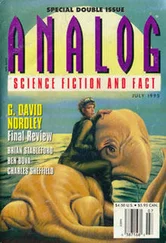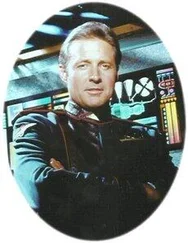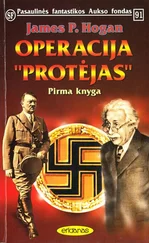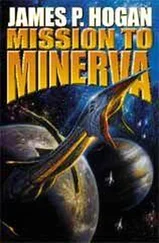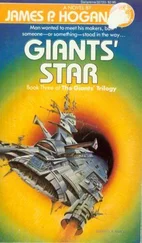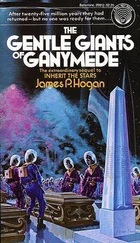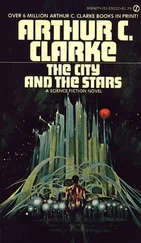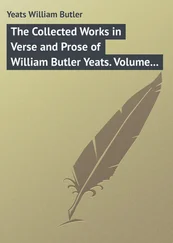James Hogan - Inherit the Stars
Здесь есть возможность читать онлайн «James Hogan - Inherit the Stars» весь текст электронной книги совершенно бесплатно (целиком полную версию без сокращений). В некоторых случаях можно слушать аудио, скачать через торрент в формате fb2 и присутствует краткое содержание. Жанр: Фантастика и фэнтези, на английском языке. Описание произведения, (предисловие) а так же отзывы посетителей доступны на портале библиотеки ЛибКат.
- Название:Inherit the Stars
- Автор:
- Жанр:
- Год:неизвестен
- ISBN:нет данных
- Рейтинг книги:3 / 5. Голосов: 1
-
Избранное:Добавить в избранное
- Отзывы:
-
Ваша оценка:
- 60
- 1
- 2
- 3
- 4
- 5
Inherit the Stars: краткое содержание, описание и аннотация
Предлагаем к чтению аннотацию, описание, краткое содержание или предисловие (зависит от того, что написал сам автор книги «Inherit the Stars»). Если вы не нашли необходимую информацию о книге — напишите в комментариях, мы постараемся отыскать её.
Inherit the Stars — читать онлайн бесплатно полную книгу (весь текст) целиком
Ниже представлен текст книги, разбитый по страницам. Система сохранения места последней прочитанной страницы, позволяет с удобством читать онлайн бесплатно книгу «Inherit the Stars», без необходимости каждый раз заново искать на чём Вы остановились. Поставьте закладку, и сможете в любой момент перейти на страницу, на которой закончили чтение.
Интервал:
Закладка:
"This is unheard of!" she exclaimed.
For a long time she remained motionless, her eyes absorbed by the raindrops slipping down the window but her mind so focused elsewhere that the sight failed to register. At last she shook herself into movement and, turning again to the keyboard, rapidly tapped in a code. The strings of tensor equations vanished, to be replaced by a profile view of her assistant, hunched over a console in the control room downstairs. The profile transformed itself into a full face as he turned.
"Ready to run in about twenty minutes," he said, anticipating the question. "The plasma’s stabilizing now."
"No-this has nothing to do with that," she replied, speaking a little more quickly than usual. "It’s about your report 2906. I’ve just been through my copy."
"Oh… yes?" His change in expression betrayed mild apprehension.
"So-a niobium-zirconium alloy," she went on, stating the fact rather than asking a question, "with an unprecedented resistance to high-temperature oxidation and a melting point that, quite frankly, I won’t believe until I’ve done the tests myself."
"Makes our plasma-cans look like butter," Josef agreed.
"Yet despite the presence of niobium, it exhibits a lower neutron-absorption cross section than pure zirconium?"
"Macroscopic, yes-under a millibarn per square centimeter."
"Interesting…" she mused, then resumed more briskly: "On top of that we have alpha-phase zirconium with silicon, carbon, and nitrogen impurities, yet still with a superb corrosion resistance."
"Hot carbon dioxide, fluorides, organic acids, hypochiorites-we’ve been through the list. Generally an initial reaction sets in, but it’s rapidly arrested by the formation of inert barrier layers. You could probably break it down in stages by devising a cycle of reagents in just the right sequence, but that would take a complete processing plant specially designed for the job!"
"And the microstructure," Valereya said, gesturing toward the papers on her desk. "You’ve used the description fibrous."
"Yes. That’s about as near as you can get. The main alloy seems to be formed around a-well, a sort of microcrystalline lattice. It’s mainly silicon and carbon, but with local concentrations of some titanium-magnesium compound that we haven’t been able to quantify yet. I’ve never come across anything like it. Any ideas?"
The woman’s face held a faraway look for some seconds.
"I honestly don’t know what to think at the moment," she confessed. "But I feel this information should be passed higher without delay; it might be more important than it looks. But first I must be sure of my facts. Nikolai can take over down there for a while. Come up to my office and let’s go through the whole thing in detail."
Chapter Three
The Portland headquarters of the Intercontinental Data and Control Corporation lay some forty miles east of the city, guarding the pass between Mount Adams to the north and Mount Hood to the south. It was here that at some time in the remote past a small inland sea had penetrated the Cascade Mountains and carved itself a channel to the Pacific, to become in time the mighty Columbia River.
Fifteen years previously it had been the site of the government-owned Bonneville Nucleonic Weapons Research Laboratory. Here, American scientists, working in collaboration with the United States of Europe Federal Research Institute at Geneva, had developed the theory of meson dynamics that led to the nucleonic bomb. The theory predicted a "clean" reaction with a yield orders of magnitude greater than that produced by thermonuclear fusion. The holes they had blown in the Sahara had proved it.
During that period of history, the ideological and racial tensions inherited from the twentieth century were being swept away by the tide of universal affluence and falling birth rates that came with the spread of high-technology living. Traditional rocks of strife and suspicion were being eroded as races, nations, sects, and creeds became inextricably mingled into one huge, homogeneous global society. As the territorial irrationalities of long-dead politicians resolved themselves and the adolescent nation-states matured, the defense budgets of the superpowers were progressively reduced year by year. The advent of the nucleonic bomb served only to accelerate what would have happened anyway. By universal assent, world demilitarization became fact.
One sphere of activity that benefited enormously from the surplus funds and resources that became available after demilitarization was the rapidly expanding United Nations Solar System Exploration Program. Already the list of responsibilities held by this organization was long; it included the operation of all artificial satellites in terrestrial, Lunar, Martian, Venusian, and Solar orbits; the building and operation of all manned bases on Luna and Mars, plus the orbiting laboratories over Venus; the launching of deep-space robot probes and the planning and control of manned missions to the outer planets. UNSSEP was thus expanding at just the right rate and the right time to absorb the supply of technological talent being released as the world’s major armaments programs were run down. Also, as nationalism declined and most of the regular armed forces were demobilized, the restless youth of the new generation found outlets for their adventure-lust in the uniformed branches of the UN Space Arm. It was an age that buzzed with excitement and anticipation as the new pioneering frontier began planet-hopping out across the Solar System.
And so NWRL Bonneville had been left with no purpose to serve. This situation did not go unnoticed by the directors of IDCC. Seeing that most of the equipment and permanent installations owned by NWRL could be used in much of the corporation’s own research projects, they propositioned the government with an offer to buy the place outright. The offer was accepted and the deal went through. Over the years IDCC had further expanded the site, improved its aesthetics, and eventually established it as their nucleonics research center and world headquarters.
The mathematical theory that had grown out of meson dynamics involved the existence of three hitherto unknown transuranic elements. Although these were purely hypothetical, they were christened hyperium, bonnevillium, and genevium. Theory also predicted that, due to a "glitch" in the transuranic mass-versus-binding-energy curve, these elements, once formed, would be stable. They were unlikely to be found occurring naturally, however-not on Earth, anyway. According to the mathematics, only two known situations could give the right conditions for their formation: the core of the detonation of a nucleonic bomb or the collapse of a supernova to a neutron star.
Sure enough, analysis of the dust clouds after the Sahara tests yielded minute traces of hyperium and bonnevillium; genevium was not detected. Nevertheless, the first prediction of the theory was accepted as amply supported. Whether, one day, future generations of scientists would ever verify the second prediction, was another matter entirely.
Hunt and Gray touched down on the rooftop landing pad of the IDCC administration building shortly after fifteen hundred hours. By fifteen thirty they were sitting in leather armchairs facing the desk in Borlan’s luxurious office on the tenth floor, while he poured three large measures of scotch at the teak bar built into the left wall. He walked back to the center, passed a glass to each of the Englishmen, went back around the desk, and sat down.
"Cheers, then, guys," he offered. They returned the gesture. "Well," he began, "it’s good to see you two again. Trip okay? How’d you make it up so soon-rent a jet?" He opened his cigar box as he spoke and pushed it across the desk toward them. "Smoke?"
Читать дальшеИнтервал:
Закладка:
Похожие книги на «Inherit the Stars»
Представляем Вашему вниманию похожие книги на «Inherit the Stars» списком для выбора. Мы отобрали схожую по названию и смыслу литературу в надежде предоставить читателям больше вариантов отыскать новые, интересные, ещё непрочитанные произведения.
Обсуждение, отзывы о книге «Inherit the Stars» и просто собственные мнения читателей. Оставьте ваши комментарии, напишите, что Вы думаете о произведении, его смысле или главных героях. Укажите что конкретно понравилось, а что нет, и почему Вы так считаете.


![Лаура Бренз - Потомственная ведьма[Inherit the Witch]](/books/79609/laura-brenz-potomstvennaya-vedma-inherit-the-witch-thumb.webp)
